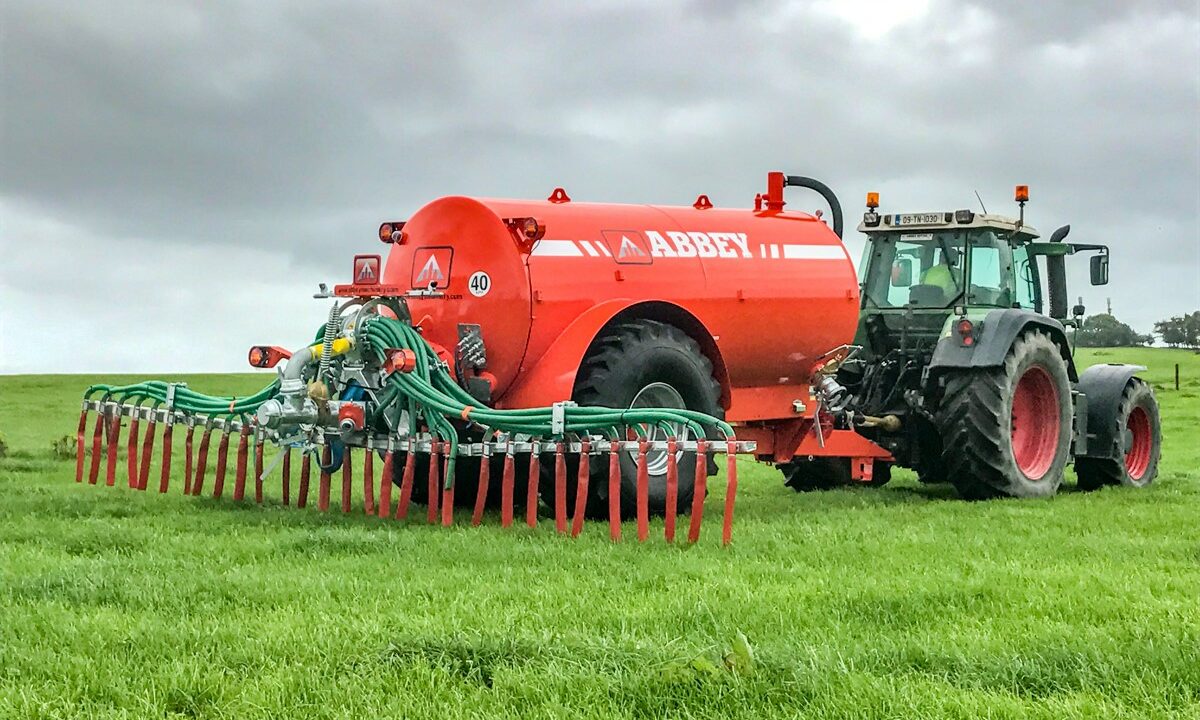Environmental sustainability is going to be key for the Irish dairy sector moving forward, alongside social and economic sustainability.
The Teagasc Moorepark Dairy Open Day 2021 begins today Tuesday (September 14), with the event due to be held over three days this year, with this year’s theme – delivering sustainability.
A report entitled: ‘Delivering on Sustainability’ by Laurence Shalloo a researcher, with Teagasc, looked at how the dairy sector has evolved over the past 10 years and what the future might hold.
Shalloo looked at environmental sustainability, which includes: greenhouse gas (GHG) emissions, ammonia (NH3) emissions, water quality, water use, biodiversity and land use planning.
Environmental sustainability
GHG emissions
Shalloo stated: “Clearly, there is a need for agriculture to play its part in GHG emissions reductions.”
He highlighted that Ireland has one of the lowest carbon footprints at 0.99kg CO2e/kg fat and protein corrected milk yield (FPCM), and when the carbon sequestration is included in the calculation, this figure is closer to 0.86kg CO2e/kg FPCM.
According to Shalloo this can be reduced further by increased productivity and efficiency, movement to urea based fertilisers, and reduced crude protein concentration of bought-in concentrate.
Ammonia emissions
Ammonia emissions reduced by 7.2% between 2018 and 2019. Shalloo highlighted that to achieve Ireland’s ammonia emissions reduction target requires the use of protected urea, reduced nitrogen fertiliser and the uptake of low emissions slurry spreading technologies (LESS).
The two measures responsible for the vast majority (80%) of the NH3 emissions reduction, is the use of protected urea fertiliser and LESS technology, at farm level.
Water quality
According to Shalloo, the most recent water quality report from the Environmental Protection Agency (EPA) (Water Quality in 2020), shows an increase in ecological water quality in Ireland compared to the previous report.
Further gains will be possible based on management changes at farm level, with a focus of reducing nitrogen (N) surplus and increasing N use efficiency.

Water use
Compared to most other countries, water usage on Irish dairy farms in quite low.
This is due to several reasons: the abundance of rainfall, low purchased concentrate and lack of irrigation in the production systems.
A recent analysis across 24 intensively monitored farms has shown that water consumption was 6L of water/kg FPCM in Ireland compared to 108L of water/kg milk in Australia and 125L of water/kg FPCM in the US.
Biodiversity
Habitat areas cover approximately 7.5% of the land area on dairy farms, with these areas made up of hedgerows, streams and field margins.
Biodiversity is declining globally with farming and agriculture being labelled as the problem when it comes to biodiversity loss.
But according to Shalloo, in reality, dairy farmers can help be the solution and are looking for advice and actions to help protect biodiversity on their farms.
The development of effective action plans that can be implemented are key to increasing biodiversity on dairy farms, allowing farms achieve the 10% target area with a higher quality area, while not affecting productivity and profitability.

Land use planning
According to the report, food production must increase to satisfy the increasing demand for animal based proteins, but at the same time as having a focus on reducing associated environmental burdens.
Shalloo believes that there is a need to move on from what people should eat, to where should that food be produced.
He raises the question whether it makes sense that animals are fed feed that is suitable for human consumption.
He also asks if more of the ruminant products globally should originate from regions and countries where ruminants do not compete with land use (poorer land quality) for human edible crop production, such as Ireland.
Shalloo states that this will require a complete rethink of the global food system and how emissions are counted at a national and international level.
Conclusion
In conclusion Shalloo states: “The Irish dairy has gone through a transformation over the past 10 years – the sector has experienced significant expansion.
“This growth is now slowing down and in reality, if this level of growth continued into the future, it would not be sustainable.”
Any future expansion will be based on the principle of decoupling. That is decoupling of GHG and NO3 emissions and N loss from production while advancing the quality and quantity of enriched areas on farm, according to the researcher.
The report indicates that all of this is possible and will be the focus of technologies that are introduced onto farms in the coming years.
Shalloo added that this will all be occurring at a time where there is increasing investment in research for new solutions, and will provide the platform for even greater ambition around sustainability at farm level.
However, it is also clear that grass-based systems of milk production have a huge role in sustainable ruminant production globally, and in reality should play an even greater role in the provision of ruminant products in the future,” the report concludes.
